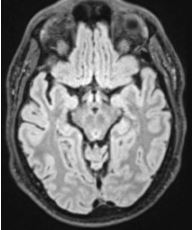The Diagnostic Dilemma in Delayed Subarachnoid Hemorrhage: A Case Report
- PMID: 37595310
- PMCID: PMC10438935
- DOI: 10.5811/cpcem.1586
The Diagnostic Dilemma in Delayed Subarachnoid Hemorrhage: A Case Report
Abstract
Introduction: Radiologically negative subarachnoid hemorrhage (SAH) has a low incidence and is associated with good clinical outcomes.
Case report: We present the case of a 44-year-old male with new-onset headaches, which began one week prior while bike riding. At an outside hospital, he had normal computed tomography head and angiogram. He declined a lumbar puncture. Over the following week, the headache was persistent. He lacked meningeal signs. Repeat studies were normal. Lumbar puncture was positive for xanthochromia.
Conclusion: Radiologically negative SAH should be included in the differential diagnosis of patients presenting with unremitting headache in the setting of recent exercise, despite negative imaging, and meningeal signs.
Conflict of interest statement
Figures
References
-
- Lagares A, Gómez PA, Lobato RD, et al. Hemorragia subaracnoidea no filiada: comparación de diferentes patrones de sangrado y evolución a largo plazo [Idiopathic subarachnoid hemorrhage; comparison of different bleeding patterns and long-term outcome] Neurocirugia (Astur) 2002;13(2):110–9. Spanish. - PubMed
-
- Macdonald RL, Schweizer TA. Spontaneous subarachnoid haemorrhage. Lancet. 2017;389(10069):655–66. - PubMed
-
- McCormack RF, Hutson A. Can computed tomography angiography of the brain replace lumbar puncture in the evaluation of acute-onset headache after a negative noncontrast cranial computed tomography scan? Acad Emerg Med. 2010;17(4):444–51. - PubMed
-
- Beetham R, Fahie-Wilson MN, Park D. What is the role of CSF spectrophotometry in the diagnosis of subarachnoid haemorrhage? Ann Clin Biochem. 1998;35(Pt 1):1–4. - PubMed

